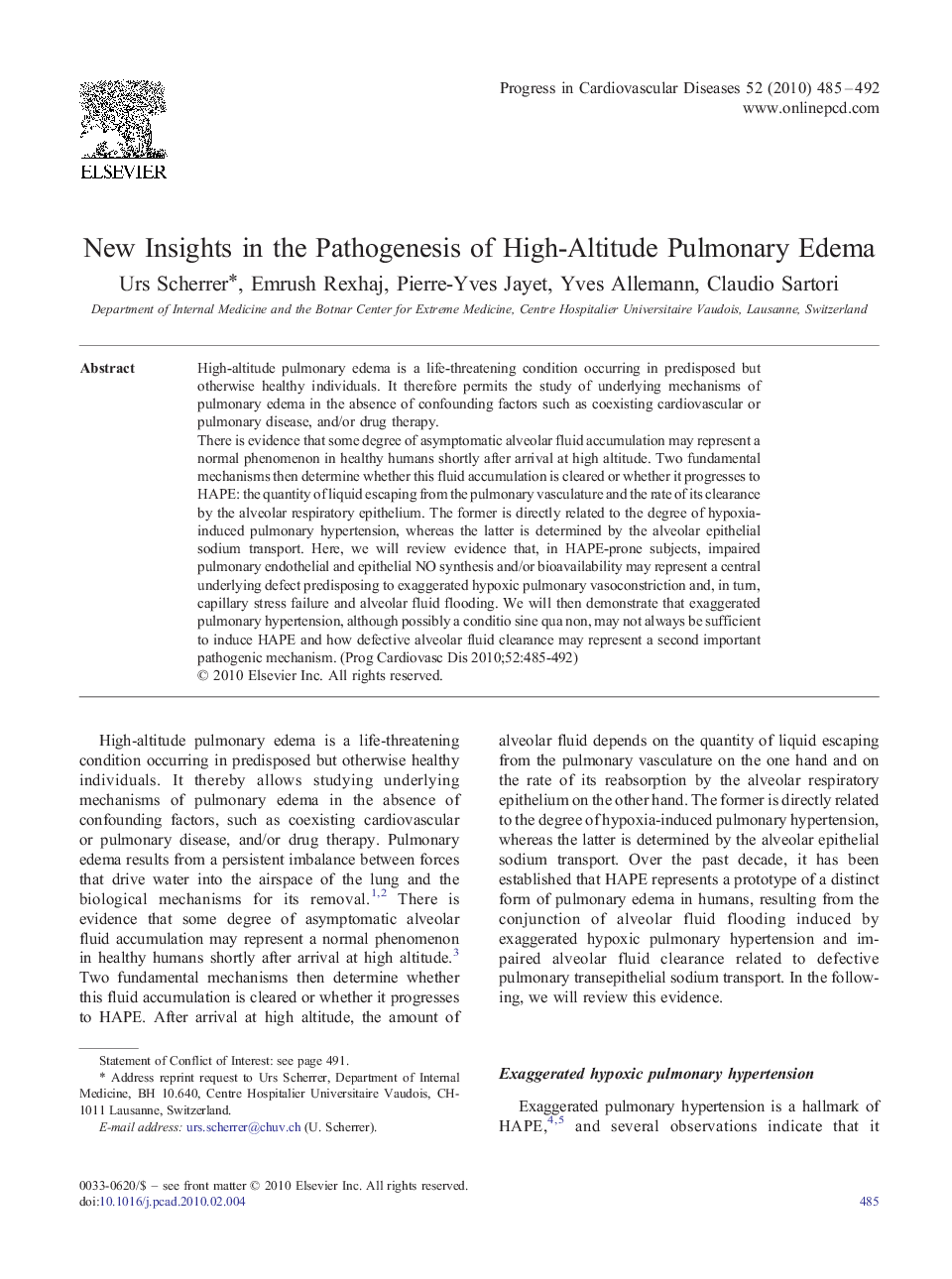| Article ID | Journal | Published Year | Pages | File Type |
|---|---|---|---|---|
| 3006945 | Progress in Cardiovascular Diseases | 2010 | 8 Pages |
High-altitude pulmonary edema is a life-threatening condition occurring in predisposed but otherwise healthy individuals. It therefore permits the study of underlying mechanisms of pulmonary edema in the absence of confounding factors such as coexisting cardiovascular or pulmonary disease, and/or drug therapy.There is evidence that some degree of asymptomatic alveolar fluid accumulation may represent a normal phenomenon in healthy humans shortly after arrival at high altitude. Two fundamental mechanisms then determine whether this fluid accumulation is cleared or whether it progresses to HAPE: the quantity of liquid escaping from the pulmonary vasculature and the rate of its clearance by the alveolar respiratory epithelium. The former is directly related to the degree of hypoxia-induced pulmonary hypertension, whereas the latter is determined by the alveolar epithelial sodium transport. Here, we will review evidence that, in HAPE-prone subjects, impaired pulmonary endothelial and epithelial NO synthesis and/or bioavailability may represent a central underlying defect predisposing to exaggerated hypoxic pulmonary vasoconstriction and, in turn, capillary stress failure and alveolar fluid flooding. We will then demonstrate that exaggerated pulmonary hypertension, although possibly a conditio sine qua non, may not always be sufficient to induce HAPE and how defective alveolar fluid clearance may represent a second important pathogenic mechanism.
